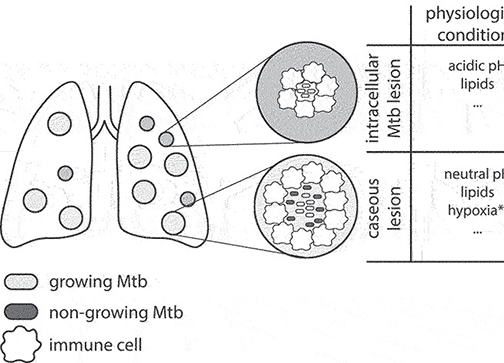Advances in the design of combination therapies for the treatment of tuberculosis
Jonah Larkins-Ford, Bree B. Aldridge
Expert Opin Drug Discov. 2022 Dec 28;1-15. doi: 10.1080/17460441.2023.2157811. Online ahead of print.
PMID: 36538813 | DOI: 10.1080/17460441.2023.2157811
Abstract
Introduction: Tuberculosis requires lengthy multi-drug therapy. Mycobacterium tuberculosisoccupies different tissue compartments during infection, making drug access and susceptibility patterns variable. Antibiotic combinations are needed to ensure each compartment of infection is reached with effective drug treatment. Despite drug combinations’ role in treating tuberculosis, the design of such combinations has been tackled relatively late in the drug development process, limiting the number of drug combinations tested. In recent years, there has been significant progress using in vitro, in vivo, and computational methodologies to interrogate combination drug effects.
Areas covered: This review discusses the advances in these methodologies and how they may be used in conjunction with new successful clinical trials of novel drug combinations to design optimized combination therapies for tuberculosis. Literature searches for approaches and experimental models used to evaluate drug combination effects were undertaken.
Expert opinion: We are entering an era richer in combination drug effect and pharmacokinetic/pharmacodynamic data, genetic tools, and outcome measurement types. Application of computational modeling approaches that integrate these data and produce predictive models of clinical outcomes may enable the field to generate novel, effective multidrug therapies using existing and new drug combination backbones.
Keywords: Tuberculosis; antibiotics; combination therapy; computational modeling; infectious diseases; multidrug therapy.





